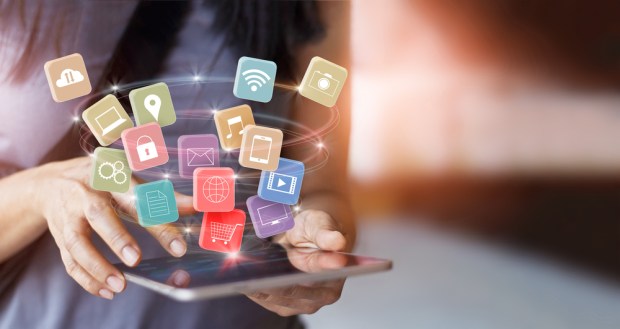NMI CEO On Payments Powering SMB Omnichannel Expansion

“Easier said than done” is a saying that can apply to many things: running a marathon, losing those last five pounds, eating dinner every night before 7:00 p.m. Creating an omnichannel experience?
For large enterprises, the most glaring difficulties can be overcome with money. The Starbucks of the world — NMI CEO Vijay Sondhi told PYMNTS in a recent conversation — can put years and hundreds of millions of dollars behind developing a mobile app, and integrating features like payments, rewards and order-ahead into that mobile offering. In this case, Starbucks has created a robust ecosystem, and the consumer can decide how much or little they wish to use.
For smaller businesses (SMBs), such as the corner coffee shops, the journey looks quite different.
First, the vast majority can’t build a robust ecosystem. Even if they wanted to, Sondhi said, they probably don’t have the reach and range of a major player to justify it, or the customers they wish to serve aren’t all that anxious to download yet another app.
Even without an app, a small merchant still has the barrier of enrollment to overcome. The only way to have an omnichannel relationship with a consumer is to be able to follow that consumer as they move between those channels. It’s a tall order, Sondhi noted: a near-instant and automatic enrollment so frictionless that a consumer isn’t even asked to enroll.
“Doing that means using the payment method with the appropriate privacy and consent to opt in, so there is not enrollment required by the customer,” he said.
Connecting Omnicommerce To Payments
In theory, online transactions remove the friction from enrolling a consumer by making it part of the checkout experience, Sondhi noted, often with an inducement in the form of a discount in exchange for an email address and password. That’s not the case in the physical store, particularly for those SMBs that rely on “older, less advanced point-of-sale [POS] terminals” that were designed to take a payment, but not be interactive at all.
Integrated mobile point-of-sale (mPOS) systems — such as Square and Clover — deliver a different experience: a single interaction with a cloud-based POS that makes it much easier for a consumer to “enroll” while checking out. Sondhi explained that this process could be as simple as connecting an email to credit card data so that a receipt is automatically sent when a transaction is made. That offers a real inducement to consumers who get digital records of transactions wherever they shop, with merchants that have such systems in place, especially with the expected volume of contactless payments.
“They are still a minority of transactions today,” Sondhi said, “but they represent an important point of interaction between SMBs and their consumers in the future.”
When a consumer taps to pay, he explained, they will be automatically pinged with an offer to enroll in the loyalty program via their encrypted, tokenized card number by “just tapping ‘yes’ in response.”
Merchants Stuck In The Middle
Another fundamental challenge to rolling the SMB space into the omnichannel era is its size and diversity, according to Sondhi.
At the top of the commerce pyramid are the enterprise-sized firms with the most resources, and the biggest wells of expert IT tech support from which to draw. At the bottom is the massive class of super-small, micro-sized firms that have one to 10 employees, and do a fairly small amount of business each year.
“Right in the center of that pyramid is what I call the classic SMB,” he said, “and they are the group with the biggest challenges in transitioning to the reality of an omnicommerce world. Often, those challenges are associated with the specific vertical in which these SMBs operate. Gyms need different [payment] functionality than a dental office, which needs something different still from the local plumber or hardware store.”
It’s a trend Sondhi said he is seeing happen fast. The worst way to start that conversation, he added, is to talk about how great tokenized payments are that offer cool customer acquisition and retention capabilities.
“The best way to start that conversation is: ‘Wouldn’t you love to keep track [of] your customer regardless of whether they walked in the door, showed up online or tried to pay with their iPhone?’” he said.
What’s Next
While predictions are tough to make, Sondhi predicted that the next year will be “the revenge of the SMBs.” In much the same way that people started showrooming a few years ago (visiting objects in-store just to buy them online), only to reverse that trend a year or two later by “webrooming” and buying in physical stores after doing their research online, Sondhi said a similar reversal might be coming for SMBs that have been shut out of the omnichannel experience for years for lack of capacity.
The enterprise has softened the ground, he said, particularly around consumer habits. However, local places have an appeal to customers, especially if they can extract more value from them via omnicommerce experiences.
For example, he noted that in San Francisco where he lives, people go to Blue Bottle Coffee, even though it charges 50 percent more for a cappuccino than Starbucks, because the coffee is known to be better. If Blue Bottle can add to its reputation for better quality with a simple onboarding process and a greater recognition of customers when they are in the store, many more customers can probably be pulled into buying from the SMB instead of Starbucks, Sondhi said.
The lesson for all SMBs is clear, Sondhi said: Use technology to recognize the customer whenever they walk through the physical or digital door, and that consumer will pick the SMB over the national brand in many cases. That ability for the SMB to have all the functionality of an enterprise-level retailer, with the personalized experience of an SMB, means “the SMB can have their cake and eat it, too.”
